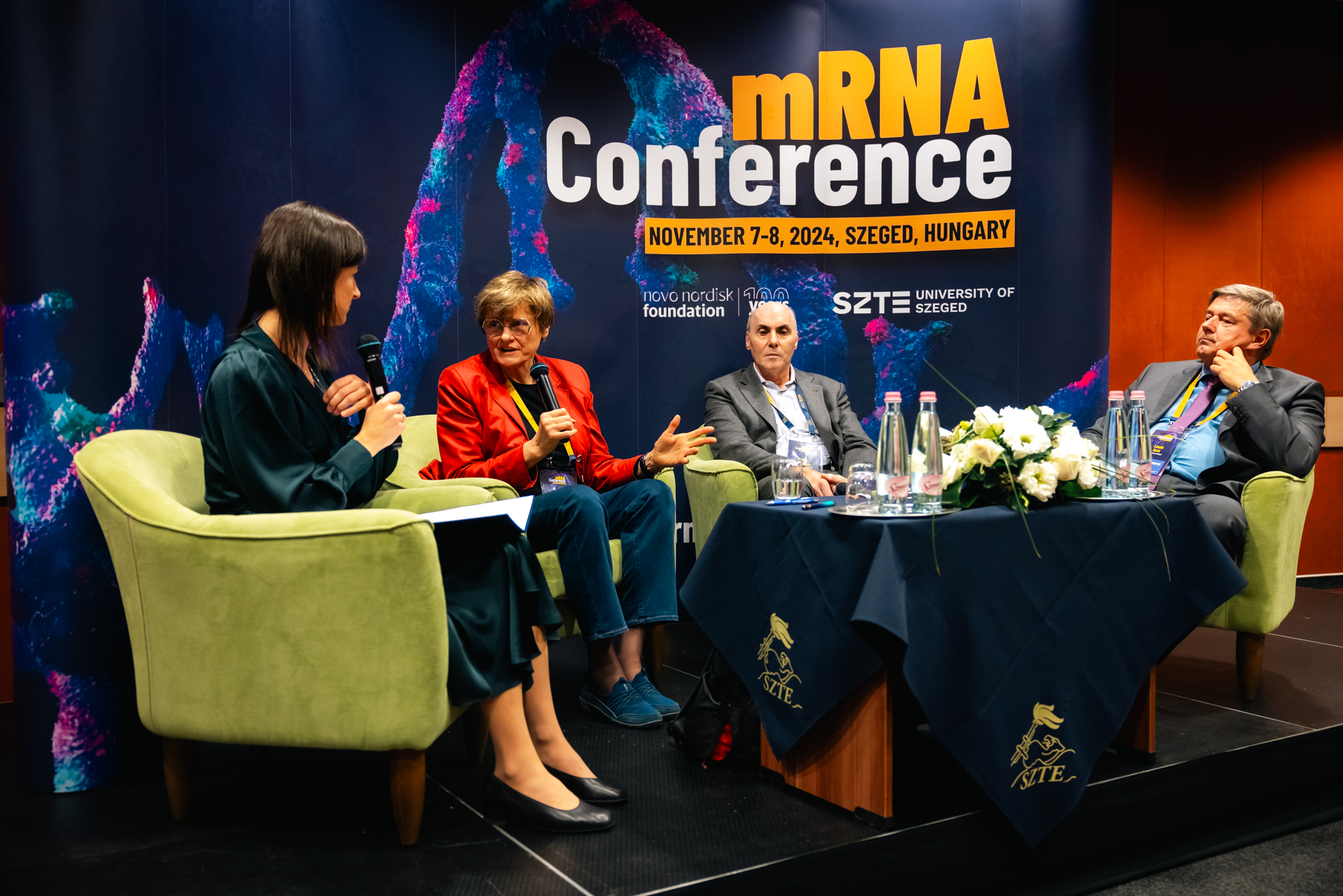
On November 7, 2024, an international press event was held on the first day of the mRNA Conference at the University of Szeged. Answering questions from journalists were Katalin Karikó, Nobel laureate professor at the University of Szeged; her research partner, Professor Drew Weissman, Roberts Family Professor in Vaccine Research and Director of the Penn Institute for RNA Innovation in Medicine at the Perelman School of Medicine; and Professor László Rovó, rector of the University of Szeged, host of the symposium. The Nobel laureates answered a range of questions, touching on their latest research, how they work together, and how their lives have changed over the past year. They even shared memories of where they were when the first person landed on the Moon.
This article features a selection of questions and answers from the press conference, with some of the responses rephrased by journalists for conciseness.
Kossuth Rádió: Research on mRNA therapies is being conducted in numerous laboratories around the world. Which of these are the most significant? And how is the research being coordinated across multiple sites?
Drew Weissman: There are several excellent centers. As for coordination, it mostly relies on dialogue between researchers. Most research is collaborative. For instance, we know how to produce RNA, but we can’t conduct research related to Ebola. So, we involve Ebola experts as well as research groups focused on other viruses and cancer.
Kossuth Rádió: One of the presentations also highlights that research is being conducted using the mRNA platform for certain retinal disorders. Which specific retinal disorders are being targeted?
Drew Weissman: There are two types of these retinal disorders: one is genetic in origin and can be treated with gene therapy. The other category includes diseases involving retinal degeneration, where various proteins are delivered to different layers of the retina.
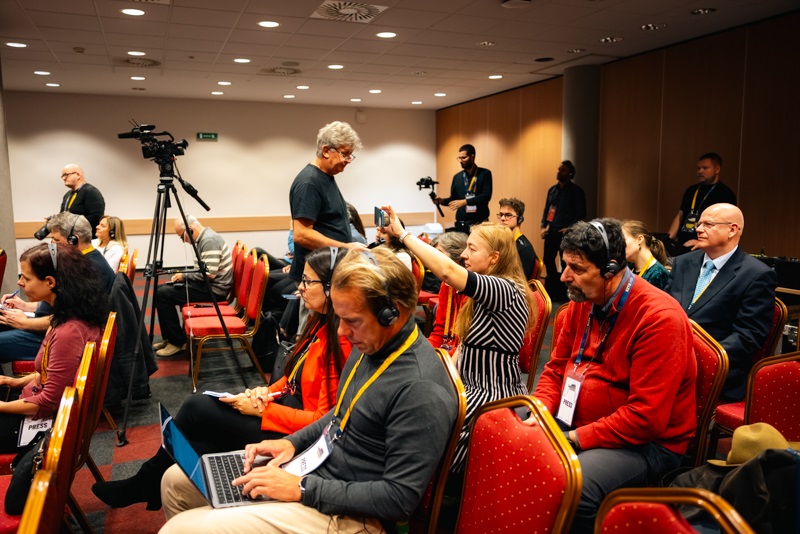
Szeged365: What is the best way to address any potential public distrust regarding mRNA-based medical interventions?
Drew Weissman: As researchers, the best approach is to engage with our audience, explain what RNA is, what it can and cannot do, and use facts to combat the spreading of misinformation. The problem is that in the world of social media, facts are often seen as dull and dry, while conspiracy theories spread much more quickly.
Katalin Karikó: We can point out that the COVID-19 vaccine was the first RNA-based vaccine, but vaccines for mumps, rubella, and others also contain RNA; in fact, the RNA molecules in those vaccines can even replicate because they contain viruses. This didn’t bother people at the time because they hadn’t yet heard about DNA. So we are not working with anything that doesn’t already naturally occur.
Szeged365: A new research center is being established at the University of Szeged to support future innovative mRNA research. What role will Katalin Karikó play in its establishment and in subsequent research activities?
Katalin Karikó: I tried to support the project financially as well, but I primarily help as an advisor, speaking with project leaders and facilitating connections. I offered advice on which research areas are worth pursuing and how to build relationships within the international research community.
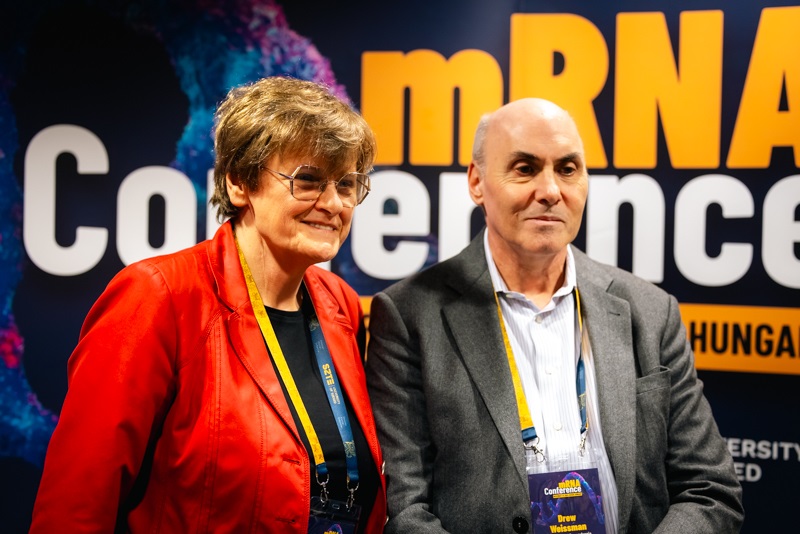
The 2023 Nobel Laureates in Physiology or Medicine, Katalin Karikó and Drew Weissman, were happy to answer journalists’ questions. Photo: István Sahin-Tóth
Index: It has been observed in several cases that after receiving the Nobel Prize, scientists tend to ease off and do not work with the same intensity as before. Since the gala in Stockholm, do you still go to your lab in the same way, or have any new goals and tasks emerged?
Drew Weissman: We have greatly expanded our research field. I showed you my grant support page. That wasn’t meant to be an obnoxious, bragging thing. That’s how many people are supporting the work we’re doing here. I’ve also talked about a unique area of research that has gained tremendous momentum since the Nobel Prize. My wife isn’t pleased that I’m actually working even harder now.
Katalin Karikó: Until 2022, I didn’t have a job; I was retired. I didn’t have a lab. I participated in various scientific projects. Since receiving the Nobel Prize, my pace of work hasn’t slowed down. I give lectures to the public and to students because I want to educate people about mRNA research and molecular biology in general.
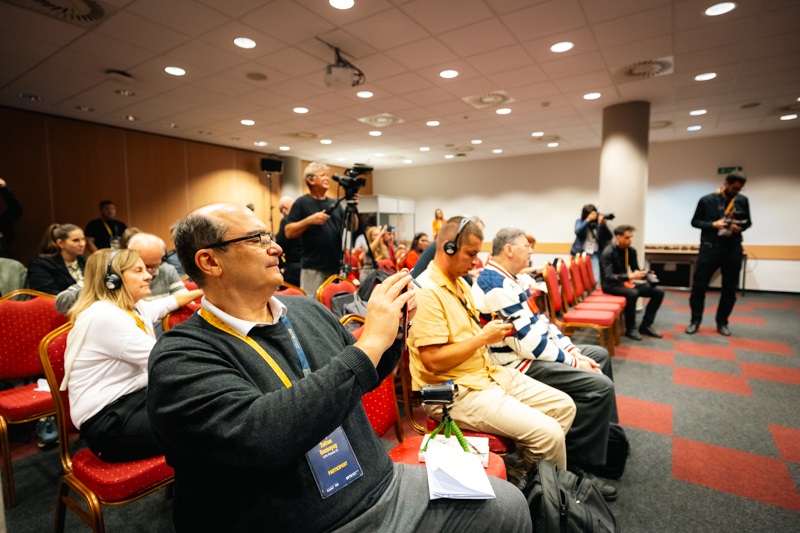
Journalist László Temesi: What is the current status of cancer-related research?
Drew Wiessman: So far they have had positive results for melanoma and pancreatic cancer. I believe immunological cancer therapy is still in its infancy, but we are on the right path and making tremendous strides. We have already achieved 60-70% success rates in treating lymphomas and leukemias, which were once considered fatal diseases. We’ve improved the prospects for curing melanoma and pancreatic cancer, and we are continuing with crucial research in areas such as checkpoint inhibitors.
Katalin Karikó: I would add that everyone puts the spotlight on cancer vaccines, but in my work at BioNTech, I have been involved in research targeting cytokines for tumor recognition. We injected mRNA encoding cytokines directly into the tumor. I also participated in a project where we developed special antibodies designed to recognize cancer-specific proteins on the surface of cancer cells. This, too, is in the clinical research phase. So, we are not only talking about mRNA vaccines but also about antibodies – antibodies that are available as proteins but are much cheaper to deliver in mRNA form, allowing the patient’s body to produce the protein itself.
Journalist László Temesi: Are there already places where mRNA is being used in treatment, and if so, where and for what types of diseases?
Drew Weissman: What I’ve been talking about is still in the clinical research phase and has not yet reached the market, not even in the United States. Only mRNA-based drugs for COVID-19 and RSV are available on the market; mRNA therapy has not yet been introduced for other areas. The pace of research is rapid. Many gene therapies have shown promising signs. One of them played a role in treating amyloidosis. In the next five years, we will likely see huge progress in the application of therapies using mRNA technology.
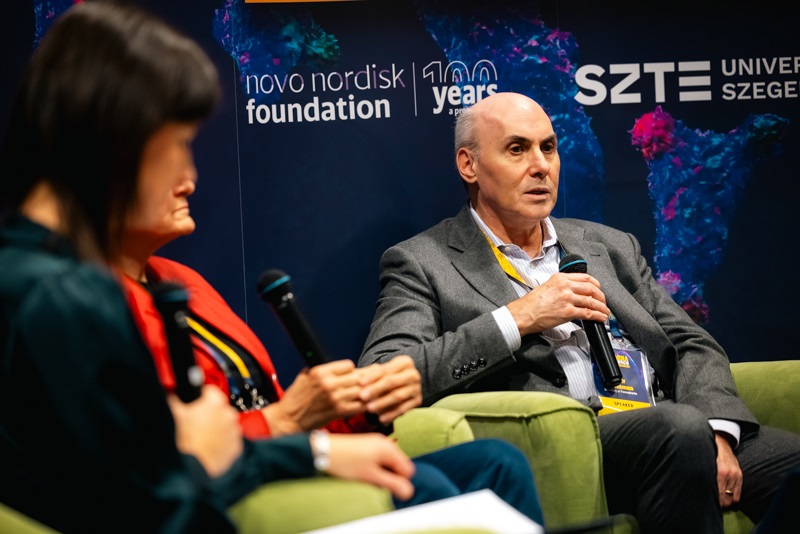
“We are very different people, but we complement each other well,” said Drew Weissman about his research partner, Katalin Karikó. Photo: István Sahin-Tóth
Szeged TV: Question to Drew Weissman: What kind of research partner is Katalin Karikó? What is it like to work with her?
Drew Weissman: As you can see, we are very different people, but we complement each other well. The most important thing is that we are driven by a thirst for knowledge, to understand the facts, what a given result means, how it can be further developed, and how it can be applied in the future. This is the driving force behind our continued research. We both struggle with sleep issues, so we might have discussions about various data even at three in the morning.
Szeged TV: And what does Katalin Karikó say in response to the same question? What is it like to work with Drew Weissman?
Katalin Karikó: Drew’s wife has said that Drew has a limited vocabulary for the day, and by the time he gets home, he’s used up all his words, even though his wife just wants to know what happened to him that day. When we recognized the importance of our research area, Drew, as a doctor, immediately thought that it could be important for lupus patients, and he even obtained samples from such patients to check if the RNA had changed and whether this was the cause of the disease. We’re looking at the same thing but from a slightly different perspective. For example, I’ve learned a lot from him about immunology. When I give immunology lectures, I always thank him. If he weren’t so knowledgeable about medical issues, I wouldn’t be where I am today, and we wouldn’t have achieved the discoveries we have so far. I believe that we are indispensable to each other for our discoveries. Our debates are very intense. When we examine the data, we are honest; we are interested in the real results.

Katalin Karikó provides both financial support and expert guidance for the new mRNA research center being established at the University of Szeged. Photo: István Sahin-Tóth
ADA Magazine: In May of next year, there will be a space travel conference in Stuttgart organized by ADA magazine. In this context, I would like to ask both of you if you remember where you were and what you were doing when the first person stepped on the Moon. How did you feel at that moment?
Katalin Karikó: I was an eighth-grade student participating in a pioneer camp in Magyarhertelend in Hungary. I remember it well – we looked up at the Moon and tried to figure out if we could see anything there. At 14, I didn’t realize that, of course, without special equipment, we wouldn’t see anything.
Drew Weissman: I was also in elementary school. We gathered around a black-and-white TV to watch the events. I must mention that we’re sending RNA on the next space station visit, an RNA experiment for them to do. So, pretty soon, RNA will be in space as well.
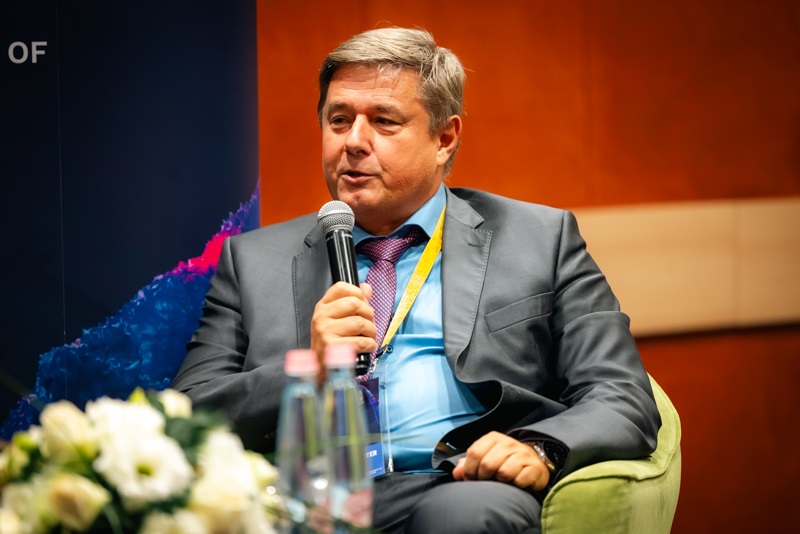
Professor Dr. László Rovó, rector of the University of Szeged. Photo: István Sahin-Tóth
The final question at the press conference was directed to László Rovó, rector of the University of Szeged:
Moderator: What is the significance of the mRNA conference for the University of Szeged?
László Rovó: First of all, I would like to express what an honor it is for me to be in the company of such highly esteemed researchers. I must note that the University of Szeged is over 440 years old. When the university moved to Szeged a hundred years ago, its founders wanted to create something extraordinary. The name of the Nobel laureate Albert Szent-Györgyi, I believe, is well known to everyone. During his time in Szeged, a truly productive and successful research community was established, and one of its ‘fruits,’ if I may say so, is Katalin Karikó. I am very happy that both this congress and mRNA technology are now connected to Szeged. We are always pleased to host any scientific conference, but I think this topic is a bit more important than most. As a doctor – since I am, first and foremost, a physician – I can say that I vividly remember what happened during COVID-19. That is now in the past, but we have heard what the future holds. I believe that mRNA technology will completely transform therapeutic possibilities within the next ten years. It fills us with great pride that these fantastic researchers have come here. I am delighted that they are participating in the research at the University of Szeged and mentoring the research groups here.
SZTEinfo
Top photo, showing the participants of the press conference (from left to right): moderator Rita Csúri-Magosi, Katalin Karikó, Drew Weissman, and László Rovó
Photo by István Sahin-Tóth
Previous articles on the mRNA Conference:
Szeged in the global spotlight as mRNA Conference kicks off
Beyond Vaccines: Dive into the World of mRNA with Coursera’s Latest Course
Countdown to the mRNA Conference: University of Szeged rolls out the red carpet
Fueling innovation: Why Novo Nordisk Foundation is backing the Szeged mRNA Conference
A real eye-opener: Coursera’s free course on mRNA
New advances in mRNA research spark hope – one year after Katalin Karikó’s Nobel Prize win
University of Szeged to host two-day conference on the ‘Swiss Army knife’ of medical science

